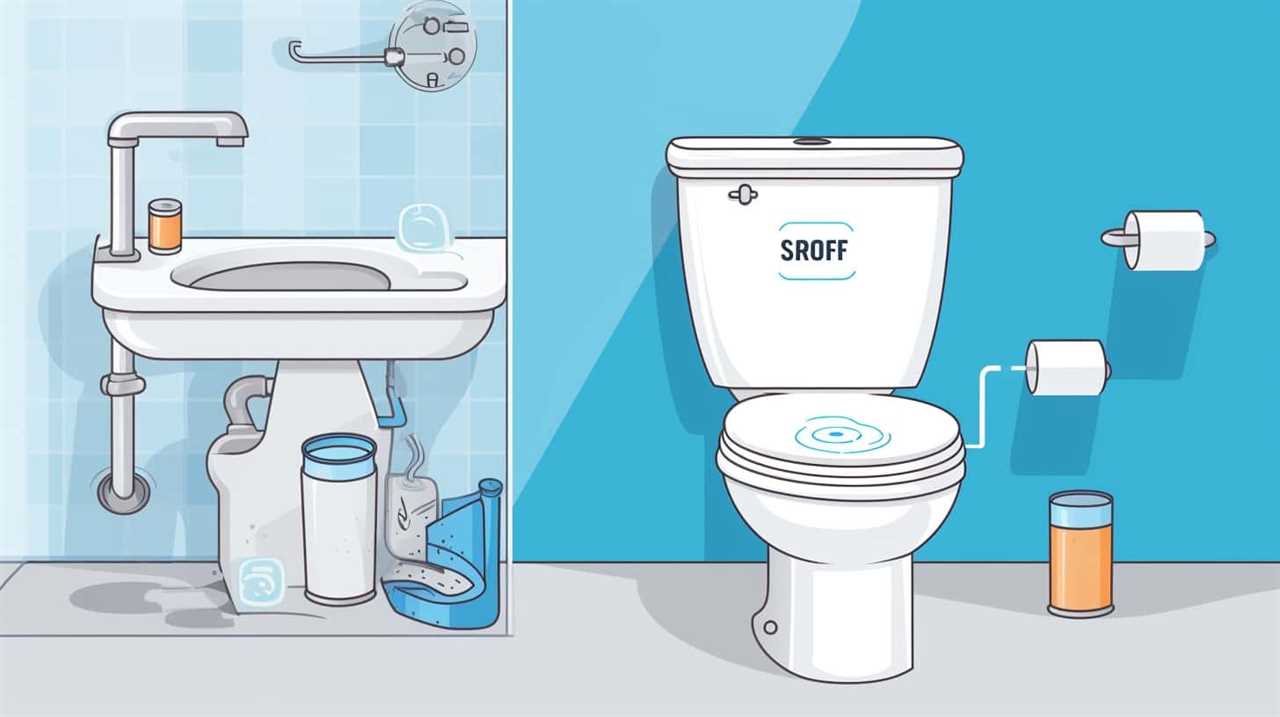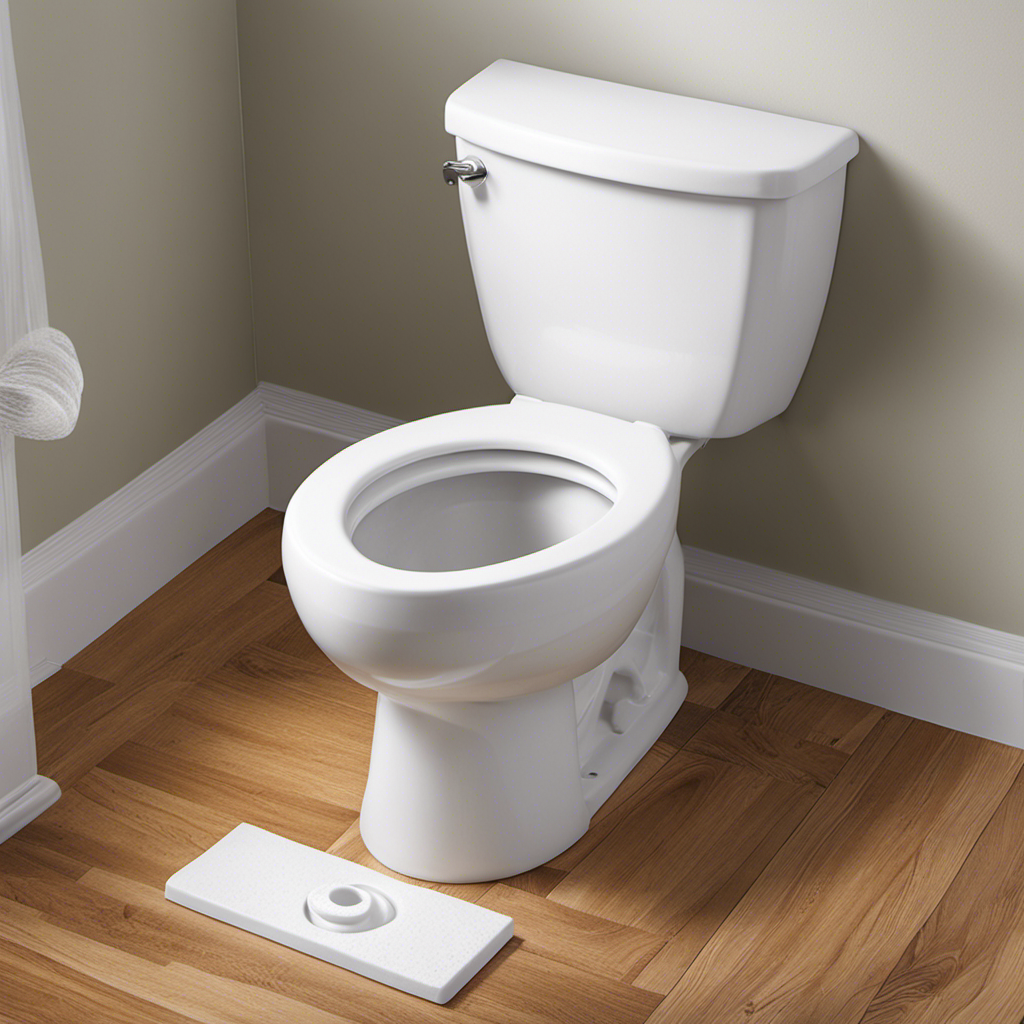Have you ever pondered on how individuals disposed of their refuse prior to the development of contemporary plumbing systems?
Well, let us take you on a journey through time and explore the fascinating world of pre-plumbing toilets.
From chamber pots and outhouses to Roman-style communal latrines, we will delve into the various ingenious methods used to handle human waste.
Join us as we uncover the challenges faced by our ancestors and the remarkable impact that plumbing has had on public health.
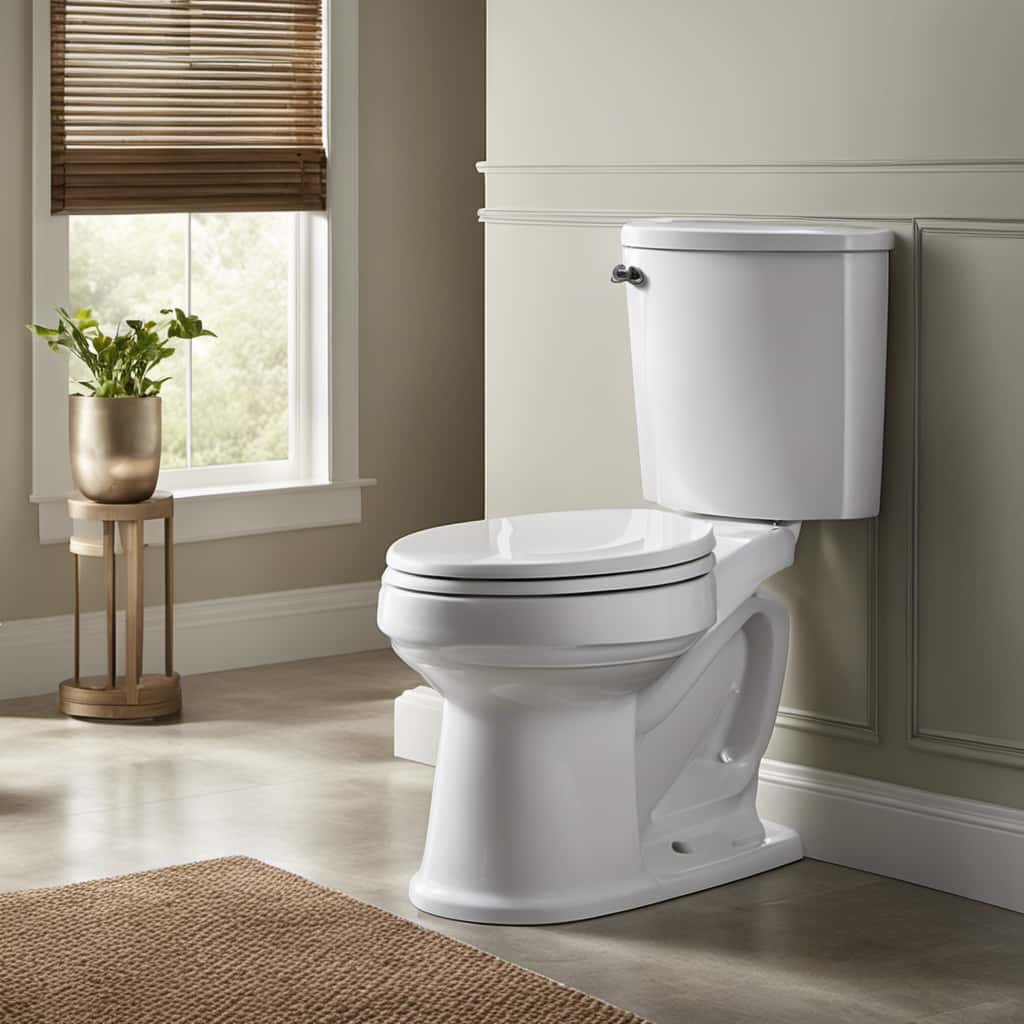
Key Takeaways
- Pre-plumbing waste disposal methods included chamber pots and buckets, outhouses and privies, outdoor waste disposal methods, pail closets and cesspools, and garderobes in castles and palaces.
- Ancient civilizations used various sanitation practices such as Roman-style communal latrines, squatting toilets, and even medieval castle moats as toilets. Newspaper and leaves were also used for hygiene purposes.
- Community hygiene practices involved the use of public bathhouses and latrines, highlighting the importance of communal facilities.
- Chamber pots were commonly used by the wealthy, and the invention of the flushing toilet revolutionized waste disposal methods.
Chamber Pots and Buckets
In the era before plumbing, we relied on chamber pots and buckets as our primary means of relieving ourselves. Chamber pots were ceramic or metal containers with a small opening and a handle. They were usually kept in bedrooms for convenience during the night. Chamber pot etiquette was an important aspect of social norms. It was customary to discreetly use the chamber pot and then empty its contents into a designated waste area.
Proper hygiene and cleanliness were vital to prevent the spread of diseases. As for buckets, they were commonly used in communal spaces such as public houses or outdoor areas. Bucket sanitation was crucial to maintain a hygienic environment. Regular cleaning and disinfection were necessary to minimize odors and prevent the spread of germs.
Outhouses and Privies
Outhouses and privies were common outdoor waste disposal methods before plumbing. These historical toilet facilities were often separate structures located outside of homes or buildings. They provided a private and enclosed space for individuals to relieve themselves. Typically, they consisted of a small wooden structure with a hole in the ground.
Outdoor Waste Disposal Methods
We used outdoor waste disposal methods called privies, which were simple structures used for relieving ourselves before plumbing was introduced. Privies were commonly found in rural areas and consisted of a small wooden structure built over a deep pit or trench. These structures were typically located at a distance from the main dwelling to ensure community hygiene.
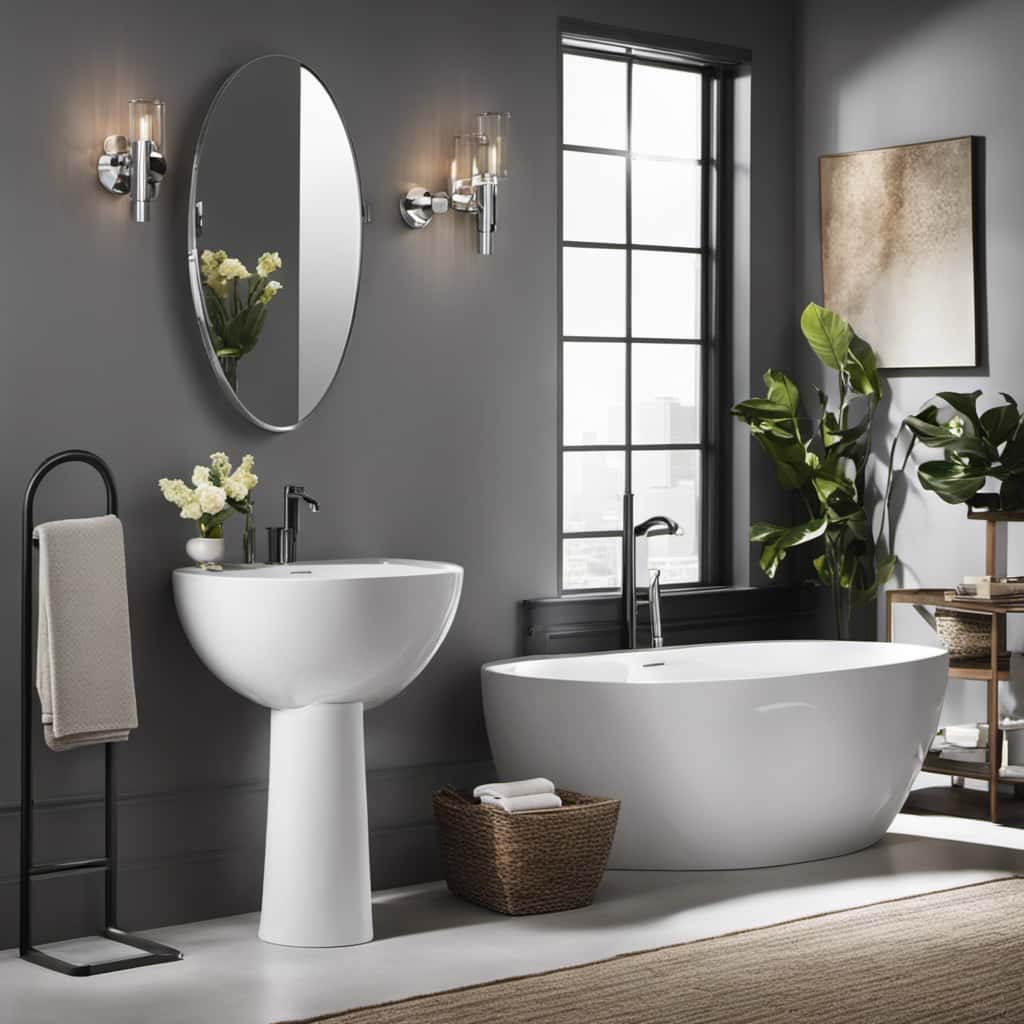
The privy had a seat with a hole, allowing waste to drop into the pit below. To minimize odors and control pests, lime or ash was often sprinkled on top of the waste. The pits would eventually fill up, and the waste would need to be emptied or the privy relocated.
While privies served as a basic solution for outdoor waste disposal, they lacked the convenience and sanitation standards that modern plumbing provides.
Historical Toilet Facilities
To continue our exploration of historical toilet facilities, let’s delve into the fascinating world of privies and outhouses. These structures were common in many cultures throughout history, each with their own unique design and cultural differences in sanitation.
| Privy | Outhouse | Historical Toilet Designs |
|---|---|---|
| A small, enclosed structure located outside the main dwelling. | A larger, more elaborate building that housed multiple toilet stalls. | Varied greatly depending on the culture and time period. From simple holes in the ground to wooden seats with ventilation systems. |
Privies were often small, enclosed structures located outside the main dwelling, offering a semblance of privacy. Outhouses, on the other hand, were larger and more elaborate, housing multiple toilet stalls. The design of these historical toilet facilities varied greatly depending on the culture and time period. Some were simple holes in the ground, while others featured wooden seats with ventilation systems.
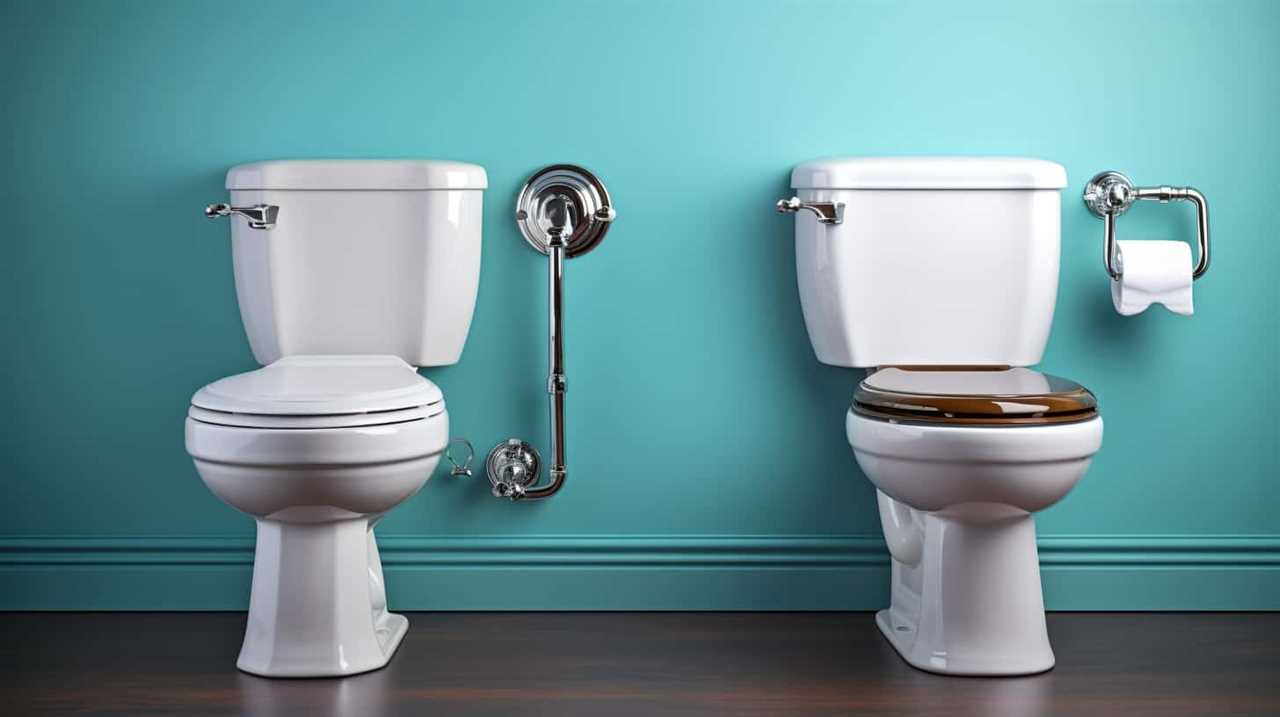
Now, let’s move on to explore the intriguing world of pail closets and cesspools.
Pail Closets and Cesspools
Pail closets and cesspools were the primary means of waste disposal before plumbing.
Pail closets, also known as privies or outhouses, were simple structures that consisted of a small building with a hole in the ground. A pail or bucket was placed beneath the hole to collect the waste. Once the pail was full, it would be emptied into a larger container and taken to a designated area for disposal.
Cesspools, on the other hand, were underground chambers where waste would collect and decompose. These were often lined with bricks or stones to prevent leakage. However, cesspools had their drawbacks, such as foul odors and the potential for contamination of groundwater.
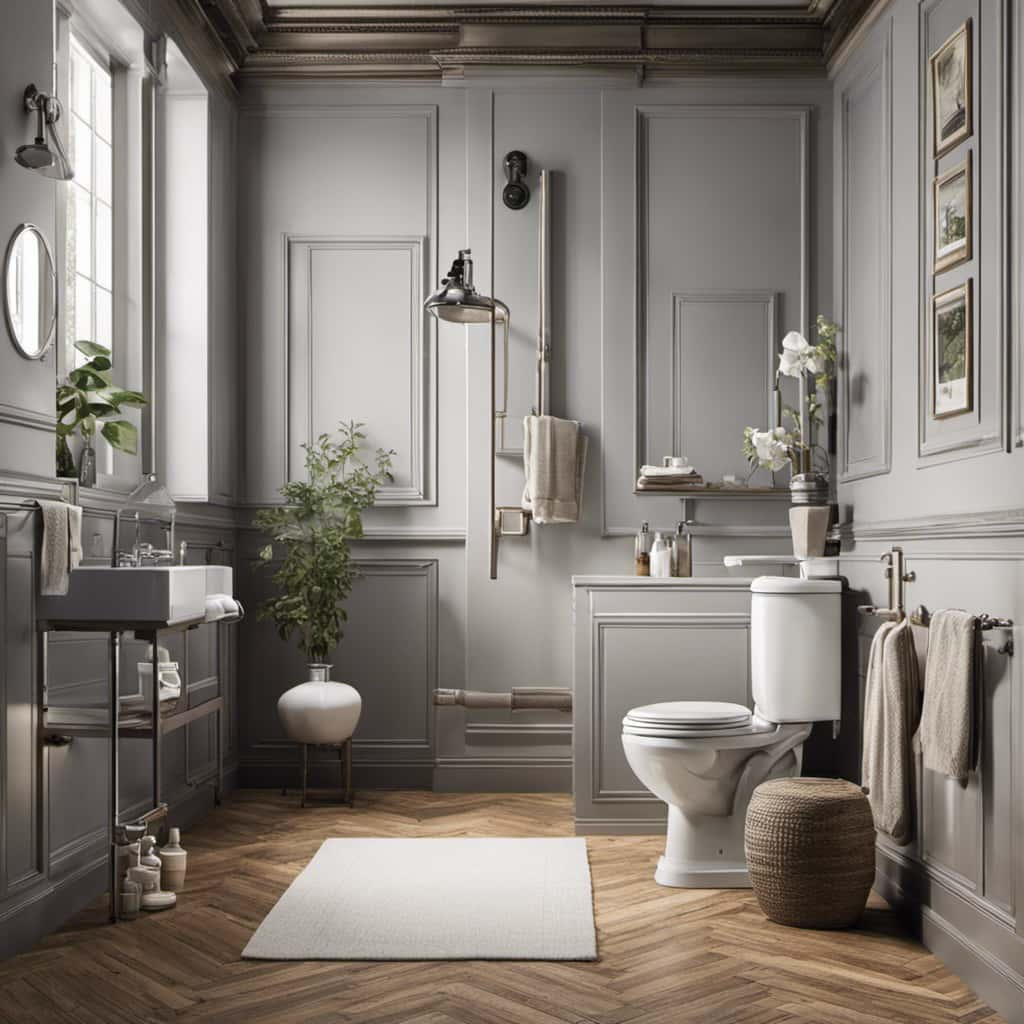
As a result, alternative methods for waste disposal were sought after to address these issues.
Garderobes in Castles and Palaces
Although pail closets were a common method of waste disposal, another innovative solution utilized in castles and palaces were garderobes. These were small, private rooms often built into the walls of the structure.
Here’s what you need to know about garderobes in castles and palaces:
- Purpose: Garderobes served as private toilets for the inhabitants of the castle or palace. They provided a more discreet and convenient option for waste disposal compared to pail closets or simply using the outdoors.
- Design: Garderobes were often built over the castle moat or an external wall, allowing waste to drop directly into the water or onto the ground below. The design incorporated a chute or opening to facilitate waste disposal.
- Privacy: To maintain privacy, garderobes were usually located in secluded areas of the castle or palace, such as in the corners of rooms or in towers.
Transition: While garderobes provided a private and efficient waste disposal solution for castles and palaces, another type of toilet system known as Roman-style communal latrines was also prevalent during this time.
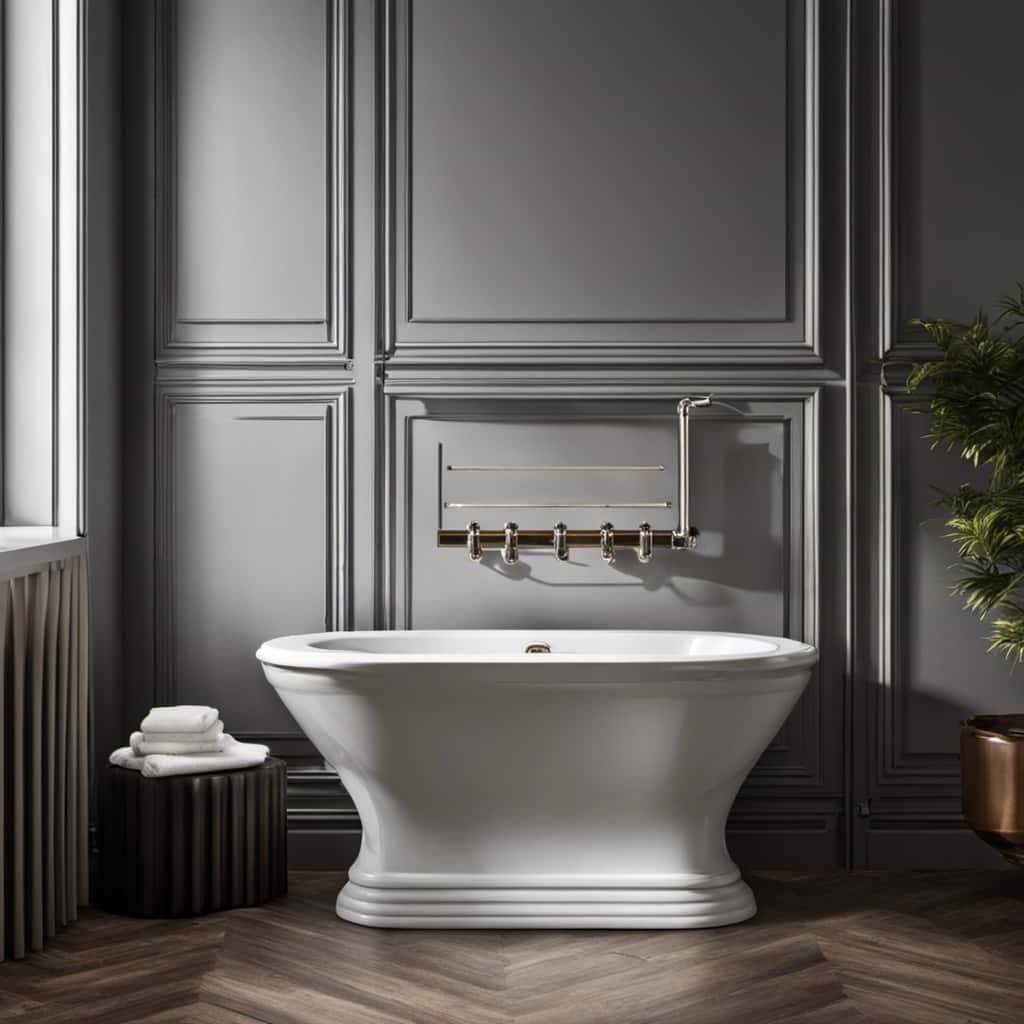
Roman-Style Communal Latrines
We experienced a different type of toilet system known as Roman-style communal latrines. These latrines were large public facilities designed to accommodate multiple users at once. They were an integral part of Roman community hygiene practices, promoting cleanliness and sanitation on a larger scale.
Roman-style communal latrines were often built with rows of stone or marble seats, with each seat having a hole that led to a sewage system below. This system allowed waste to be efficiently transported away from the latrines, preventing the spread of diseases and foul odors.
The communal aspect of these latrines also fostered a sense of social interaction among the users. Transitioning into the subsequent section about squatting toilets in ancient civilizations, it’s fascinating to explore the various toilet systems that existed in different cultures throughout history.
Squatting Toilets in Ancient Civilizations
People in ancient civilizations utilized squatting toilets as a practical and hygienic solution for their toilet needs. This ingenious invention had several advantages over other toilet systems, including improved digestion, reduced strain, and enhanced cleanliness.

- Improved digestion: Squatting while using the toilet aligns the rectum and colon, allowing for easier elimination and reducing the risk of constipation.
- Reduced strain: Squatting toilets promote a more natural position for bowel movements, reducing the need for excessive straining that can lead to hemorrhoids and other digestive issues.
- Enhanced cleanliness: Squatting toilets minimize contact with the toilet seat, reducing the risk of spreading bacteria and infections.
Even in modern society, squatting toilets continue to be used in various parts of the world, recognizing the health benefits they offer.
Transitioning from ancient civilizations to medieval times, another interesting toilet system was employed: medieval castle moats as toilets.
Medieval Castle Moats as Toilets
When it comes to medieval castle moats as toilets, there are several important points to consider.
Firstly, moat waste disposal was a key aspect of castle sanitation.

Secondly, understanding the methods used for castle hygiene can provide insight into the living conditions of the time.
Lastly, exploring the hygiene practices in medieval castles can shed light on the challenges faced by the inhabitants and the measures taken to maintain cleanliness.
Moat Waste Disposal
How did medieval castle moats serve as toilets for waste disposal? Here’s a breakdown of how this unique waste disposal system worked:
- Design: Medieval castle moats were strategically designed to serve multiple purposes, including waste disposal. They were often positioned outside the castle walls and connected to a nearby water source, such as a river or lake.
- Function: The castle’s inhabitants would use the moat as a toilet, allowing waste to be disposed of directly into the water. This not only kept the castle relatively clean but also prevented the accumulation of waste within the castle walls.
- Natural filtration: The flowing water in the moat played a crucial role in waste management. It acted as a natural filtration system, carrying away the waste and preventing it from stagnating or causing foul odors.
While medieval castle moats may seem like an unusual choice for waste disposal, they were an effective solution given the limited technology and resources available during that time.
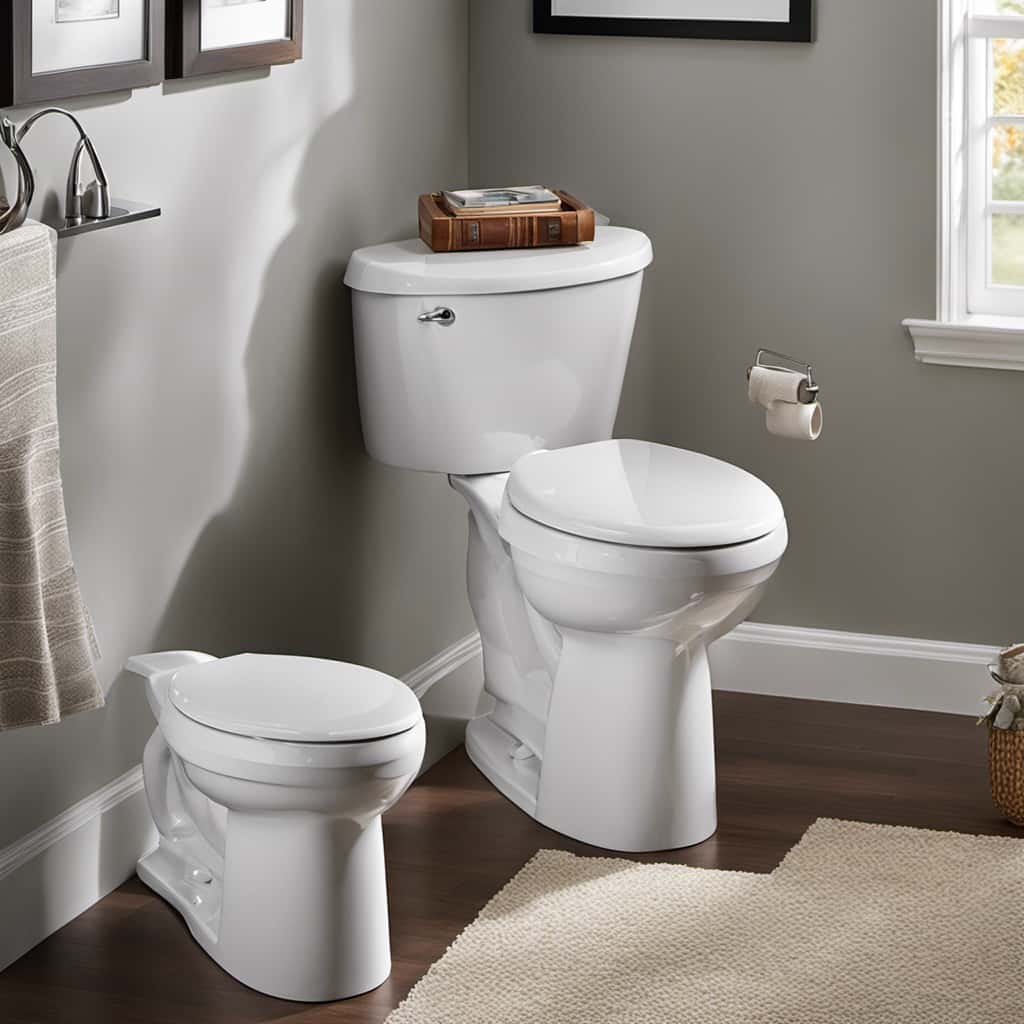
Castle Sanitation Methods
Medieval castle moats served as toilets for waste disposal, as they were strategically designed and connected to nearby water sources, allowing us to dispose of waste directly into the water. Castle sewage systems were an integral part of medieval sanitation practices, ensuring the cleanliness and hygiene of the castle inhabitants.
The moats acted as a natural sewage system, effectively removing waste from the castle grounds. The waste would flow into the moat and eventually be carried away by the nearby water source, such as a river or lake.
This method of waste disposal wasn’t only convenient but also helped to prevent the spread of diseases and maintain a healthier living environment within the castle walls. The castle moats, therefore, played a crucial role in medieval sanitation practices, providing an efficient and effective solution for waste management.
Hygiene in Medieval Castles
Our castle moats served as an innovative solution for waste disposal, ensuring the cleanliness and hygiene of our medieval living environment. Castle hygiene was a top priority, and the moat played a crucial role in maintaining it. Here are three ways in which medieval castle moats contributed to hygiene:
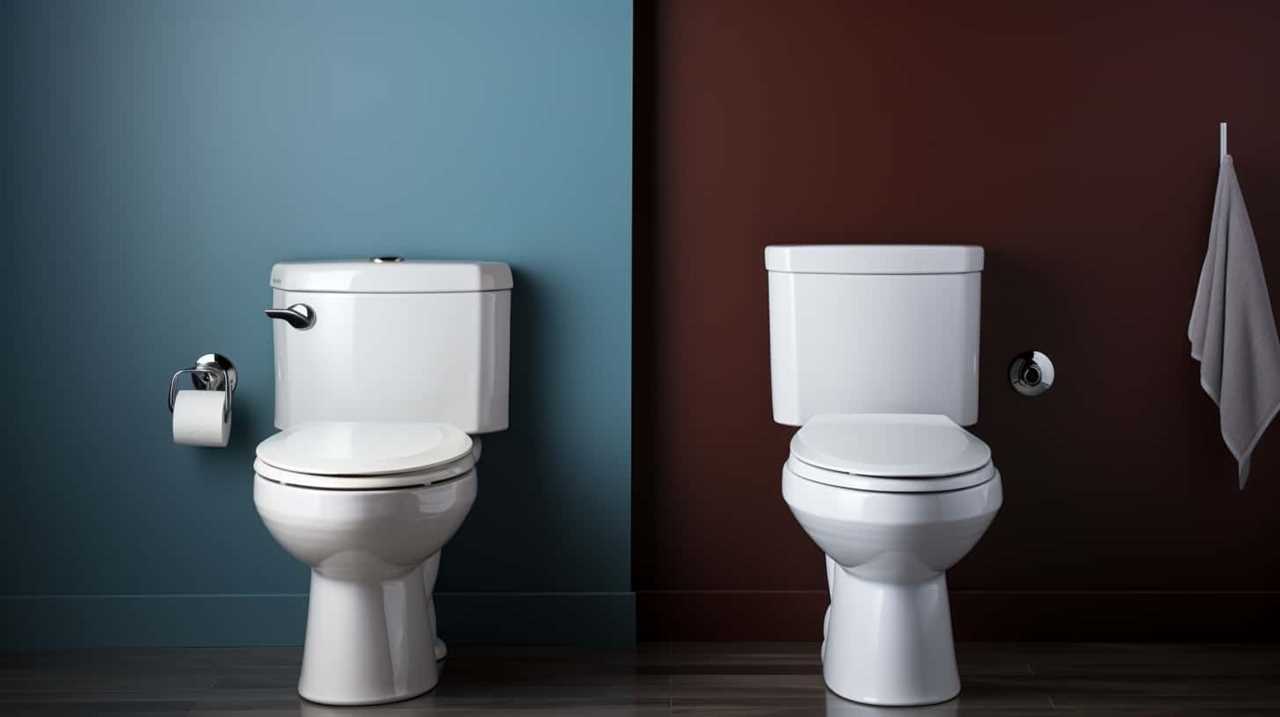
- Waste disposal: The moat served as a natural sewage system, allowing waste to be carried away from the castle. This helped in preventing the accumulation of waste within the castle walls.
- Water filtration: The moat acted as a filter, removing impurities and bacteria from the water supply. This ensured that the water used for various purposes within the castle, including drinking and bathing, remained clean and safe.
- Pest control: The moat created a physical barrier against pests and vermin, reducing the risk of disease transmission and maintaining a healthier living environment.
As we explore further, we’ll discuss the use of newspaper and leaves for hygiene, which were common practices in medieval times.
The Use of Newspaper and Leaves for Hygiene
During that time, we relied on a limited supply of newspaper and leaves for maintaining our hygiene. With no access to modern plumbing, finding alternatives for toilet paper was a challenge.
Newspaper, although not ideal, was widely used as a substitute. It provided a relatively clean and disposable option for personal hygiene. Leaves, on the other hand, were a more natural choice, especially for those living in rural areas. The use of newspaper and leaves helped prevent the spread of diseases and maintained a certain level of cleanliness.
However, it’s important to note that these methods didn’t provide the same level of comfort and sanitation as modern toilet paper. Transitioning from these makeshift solutions, we’ll now explore the development of public bathhouses and latrines.
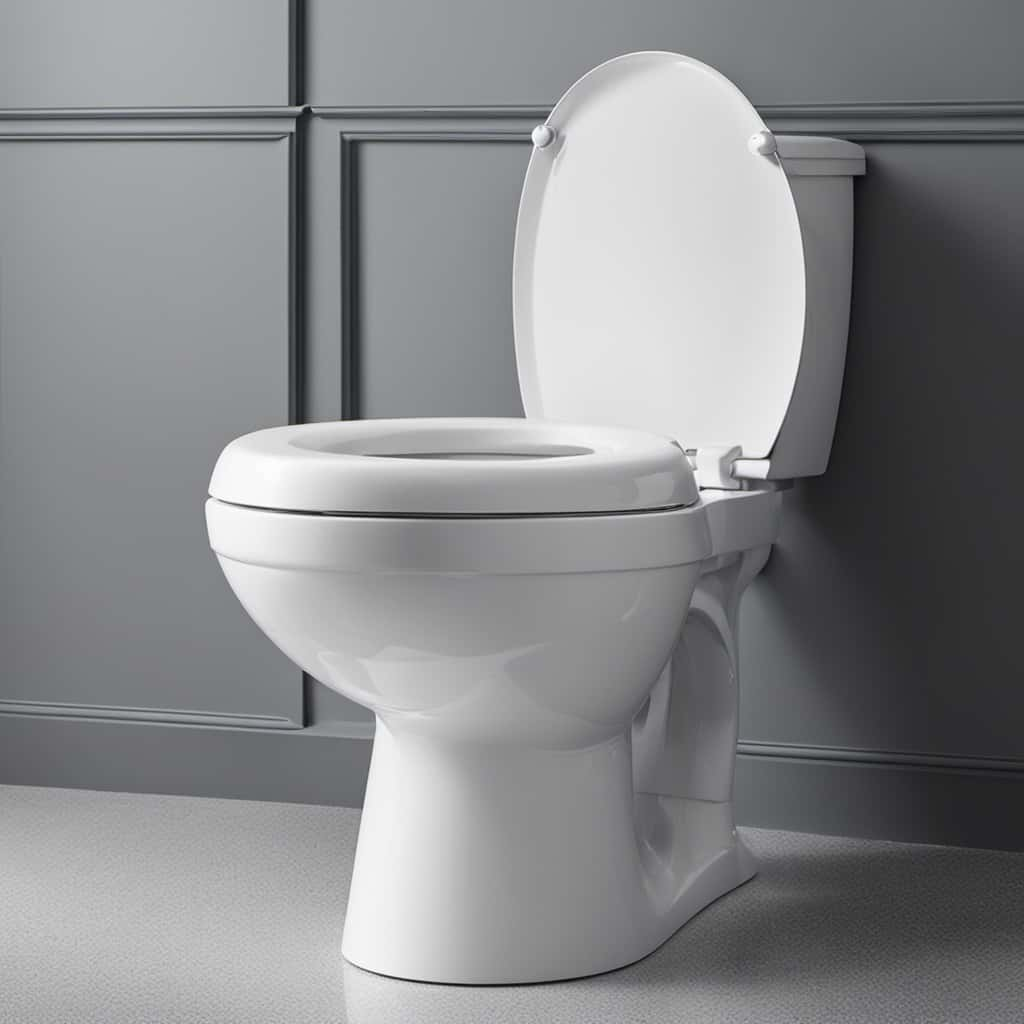
Public Bathhouses and Latrines
Public bathhouses and latrines were crucial for maintaining sanitation in ancient times. These communal facilities provided a space for individuals to cleanse themselves and dispose of waste, promoting community hygiene practices.
Sanitation in Ancient Times
In ancient times, people utilized communal bathhouses and latrines for their sanitation needs. These facilities played a crucial role in maintaining cleanliness and promoting good hygiene practices. Here are three interesting facts about sanitation in ancient times:
- Ancient Hygiene Practices: Ancient civilizations had various hygiene practices to ensure cleanliness. They used natural ingredients like herbs and oils for bathing, and some even employed scraping tools to clean their bodies. Additionally, they recognized the importance of oral hygiene and used items like twigs and chew sticks for teeth cleaning.
- Cultural Differences in Sanitation: Different cultures had diverse approaches to sanitation. For instance, the Romans had elaborate public bathhouses with hot and cold water. In contrast, the ancient Greeks preferred private baths and used chamber pots for waste disposal. Similarly, the Indus Valley civilization had advanced drainage systems and public toilets.
- Importance of Communal Facilities: Communal bathhouses and latrines served as social gathering places where people couldn’t only fulfill their sanitary needs but also socialize and exchange information. These shared spaces played a significant role in community building and promoting healthy relationships.
Understanding ancient sanitation practices and cultural differences provides valuable insights into the historical development of sanitation systems and the importance placed on cleanliness and hygiene.
Community Hygiene Practices
We utilized communal bathhouses and latrines for our sanitation needs. These community practices played a crucial role in waste management during times when individual plumbing systems were non-existent.
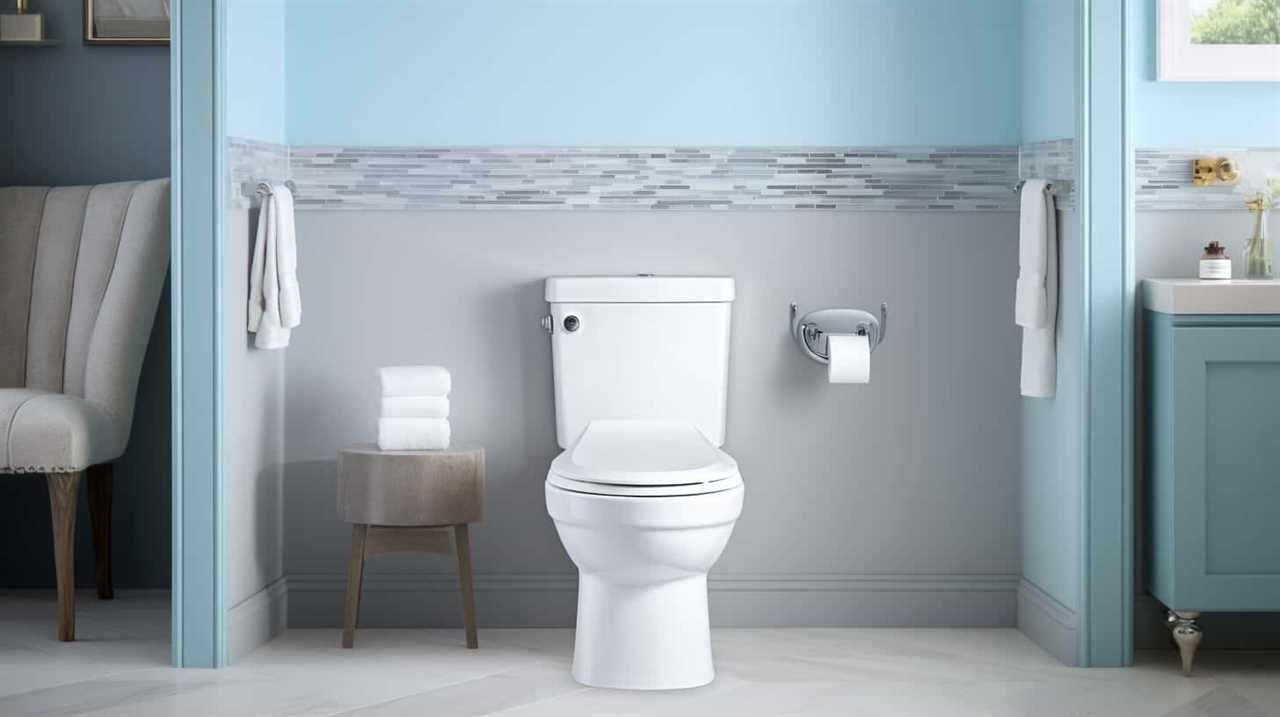
Public bathhouses were large structures where people gathered to bathe and cleanse themselves. These facilities provided a space for individuals to maintain personal hygiene, promoting cleanliness and health within the community.
Latrines, on the other hand, were designated areas for waste disposal. They were communal toilets shared by multiple individuals. Waste management in these latrines typically involved the use of water or other substances to flush away the waste.
While these practices may seem primitive compared to modern plumbing systems, they were effective in maintaining basic hygiene standards and preventing the spread of diseases within the community.
Chamber Pots for the Wealthy
Before plumbing, the wealthy used chamber pots as their preferred method of relieving themselves. Chamber pots were a common fixture in wealthy households, providing a convenient and private solution for their sanitation needs.
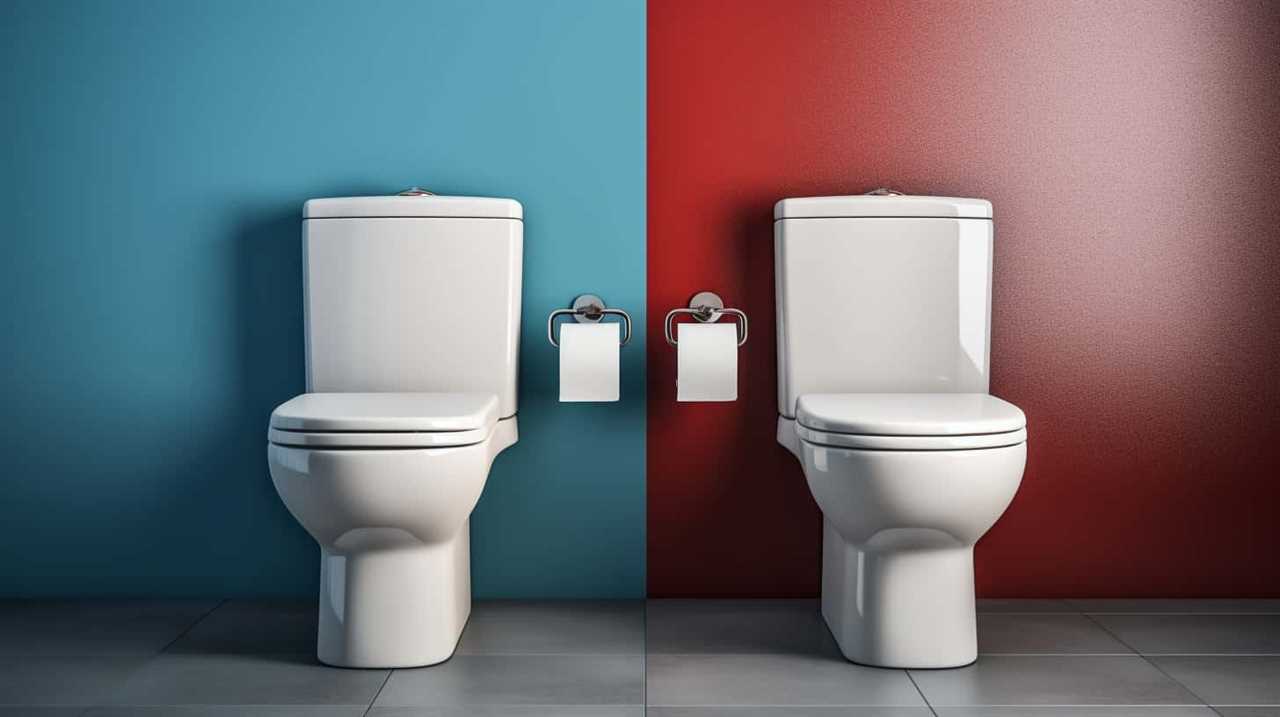
Here are three interesting facts about chamber pots:
- Elegant Designs: Chamber pots for the wealthy were often crafted from fine materials such as porcelain or silver, adorned with intricate patterns and elaborate handles. These luxurious designs added a touch of opulence to an otherwise utilitarian object.
- Personal Servants: Wealthy individuals employed servants to empty and clean their chamber pots, ensuring a hygienic and discreet process. These servants played a crucial role in maintaining the cleanliness and comfort of the household.
- Portable Convenience: Chamber pots were portable, allowing the wealthy to have a designated container for relieving themselves in various rooms of their homes. This convenience eliminated the need to venture outside to use communal facilities, reflecting the privileged lifestyle enjoyed by the wealthy.
The Invention of the Flushing Toilet
The invention of the flushing toilet revolutionized sanitation practices for households worldwide. Its impact and historical significance can’t be overstated.
Before the flushing toilet, people relied on chamber pots and outhouses, which weren’t only unsanitary but also inconvenient.
The invention of the flushing toilet brought about a major shift in how waste was managed. It consisted of a water tank, a bowl, and a mechanism that allowed for the flushing of waste with a press of a lever. This invention drastically improved hygiene and eliminated the need for manual waste disposal.

The flushing toilet became a symbol of modernity and a significant step towards improving public health. Its invention had a lasting impact on society, setting the foundation for modern plumbing systems and improved sanitation practices.
The Role of Night Soil Collectors
Night soil collectors played a vital role in managing waste before the invention of the flushing toilet, regularly collecting and disposing of human waste from households. Their role had a significant impact on public health.
Here are three key ways in which night soil collectors contributed to sanitation:
- Waste removal: Night soil collectors ensured that human waste was regularly removed from homes, minimizing the risk of diseases spreading.
- Proper disposal: They also ensured that the waste was disposed of in a safe and controlled manner, reducing the risk of contamination in the surrounding environment.
- Maintenance of cleanliness: By regularly removing waste, night soil collectors helped maintain cleanliness in communities, improving overall public health.
The work of night soil collectors was crucial in addressing the sanitation needs of the time. However, challenges in maintaining proper sanitation in cities persisted.
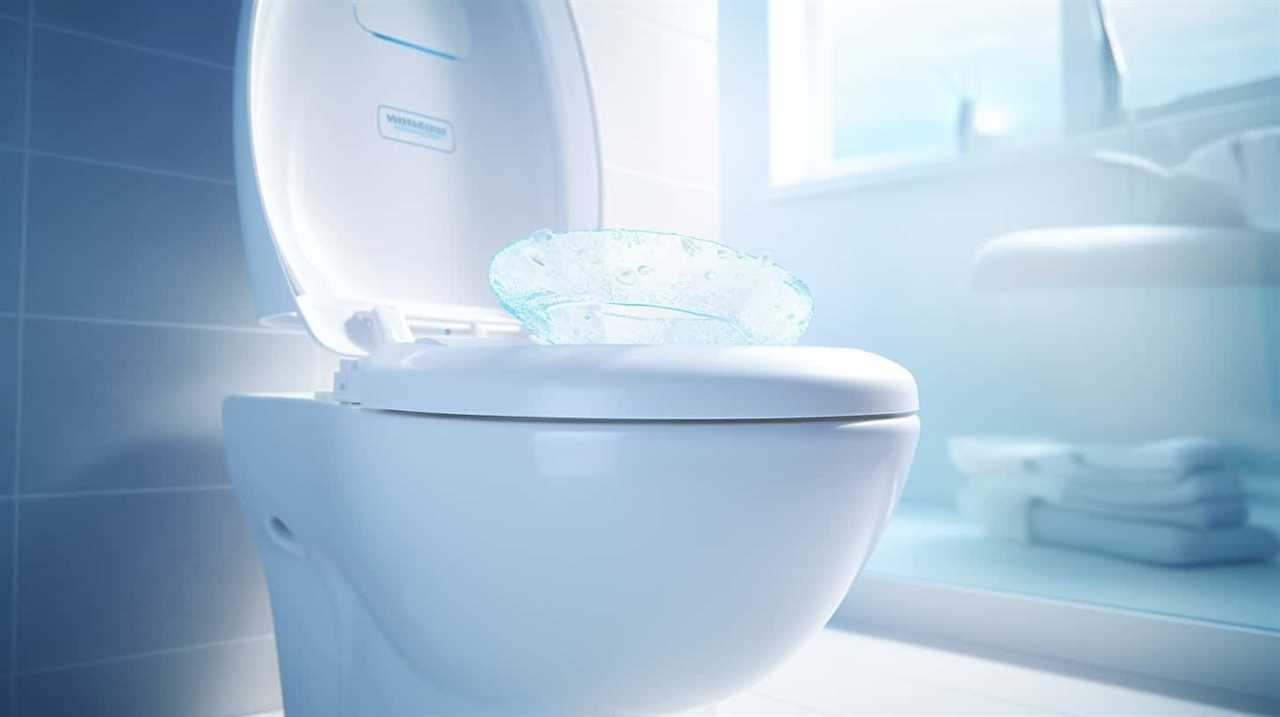
Challenges of Sanitation in Cities
One of the major challenges we faced in managing sanitation in cities was the limited availability of proper waste disposal methods. In densely populated urban areas, waste management became a pressing issue as the accumulation of waste posed serious threats to community health.
Improper disposal of waste led to the spread of diseases, contamination of water sources, and unsanitary living conditions. Without efficient waste management systems in place, cities struggled to maintain cleanliness and hygiene. The lack of adequate infrastructure and resources hindered our ability to effectively address these challenges. As a result, communities suffered from outbreaks of diseases and the overall quality of life was severely impacted.
Developing sustainable waste management practices became imperative for ensuring the well-being and health of city dwellers.
The Impact of Plumbing on Public Health
As we transition into discussing the impact of plumbing on public health, it’s important to recognize the significant improvements it brought in terms of waste management and sanitation in cities. Plumbing has had a profound impact on hygiene and advancements in public sanitation, leading to a healthier and safer environment for communities.
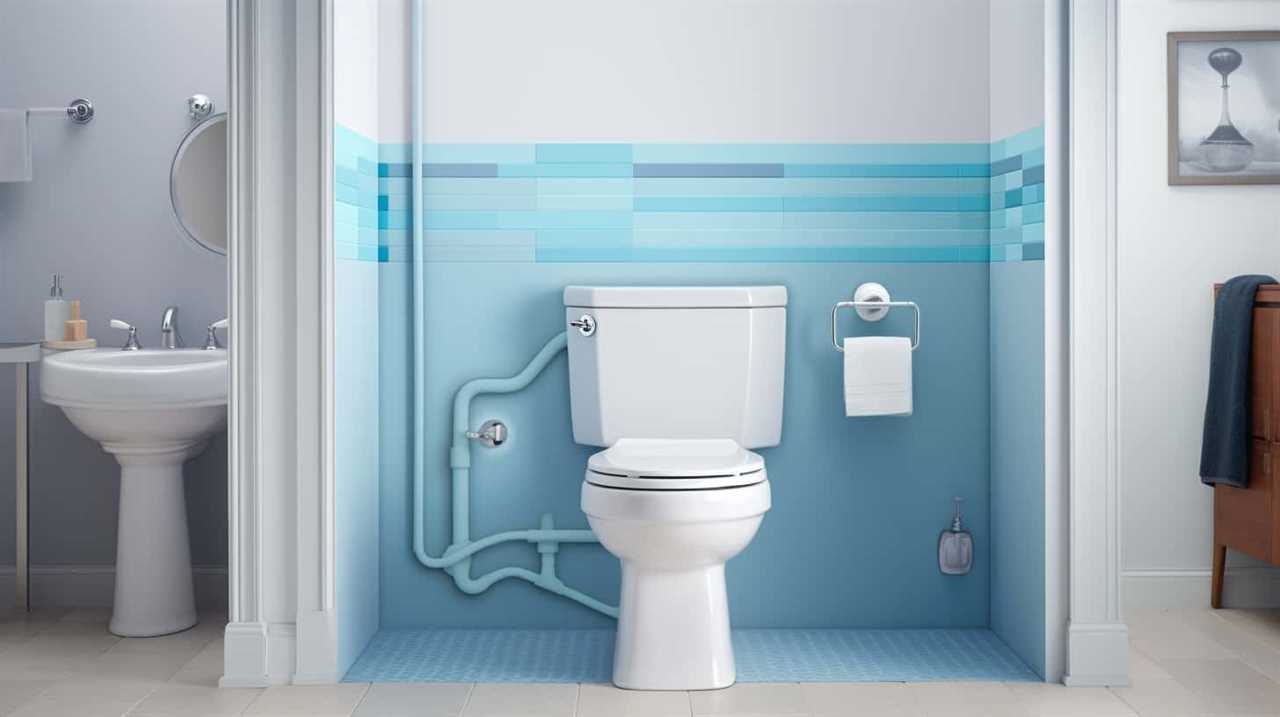
Here are three key ways plumbing has transformed public health:
- Proper waste disposal: Plumbing systems allow for the efficient removal of waste from homes and buildings, preventing the accumulation of harmful bacteria and pathogens.
- Improved water supply: Plumbing has facilitated the delivery of clean and safe water to households, reducing the risk of waterborne diseases and ensuring proper hygiene practices.
- Prevention of disease outbreaks: With the implementation of plumbing infrastructure, the spread of diseases like cholera and typhoid, which were once rampant in urban areas, has been significantly reduced.
Conclusion
In conclusion, the evolution of toilets reveals the remarkable progress in sanitation and public health. From the humble chamber pots and outhouses to the invention of flushing toilets and the implementation of plumbing systems, our modern-day conveniences have transformed the way we handle waste.
The juxtaposition of ancient garderobes in castles and communal Roman latrines with the advancements in plumbing highlights the stark contrast between past and present. Plumbing has undoubtedly played a vital role in improving hygiene and preventing diseases, making our lives cleaner and healthier.

